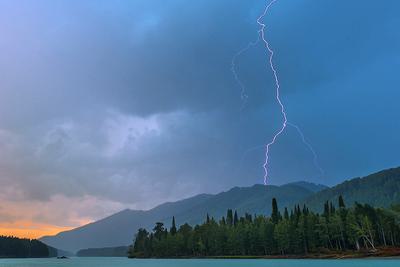Lightning over the Katun River in Siberia, August 5, 2014. A Vahanvaty via Wikipedia
Three successive thunderstorms formed in the Arctic last week, a rare phenomenon in the frigid north, but one that is likely to become more common as the planet warms, Reuters reported.
“I have no memory of three consecutive days of this kind of thing,” Rick Thoman, a climate scientist at the University of Alaska Fairbanks, told Reuters. “What used to be very rare is now just rare.”
Typically, the Arctic lacks the heat needed to generate thunderstorms, as sea ice keeps the ocean surface cool. But with climate change, Arctic waters are warming, and the ice is melting rapidly. The decline of sea ice has made more liquid water available to evaporate, adding more moisture to the atmosphere.
Since 2010, incidents of summer lightning in the Arctic Circle have tripled, according to a recent study published in the journal Geophysical Research Letters. Lightning has even struck within 60 miles of the North Pole, researchers found.
The growth of Arctic lightning poses a danger to boreal forests in Canada, Northern Europe and Russia, which have been made vulnerable to blazes by scorching summer heat. Boreal Siberia sees more lightning than any other Arctic region, and the uptick in thunderstorms is contributing to more intense wildfires, Reuters reported, imperiling one of the planet’s most vital carbon sinks.
Lightning also poses a threat to mariners, who face numerous hazards in the rapidly warming Arctic, which is seeing an increase in shipping as sea ice vanishes. In open waters, vessels can easily become lightning rods.
“What you really need is to pay better attention to the lightning forecasts,” Robert Holzworth, an atmospheric physicist at the University of Washington, told Reuters.



